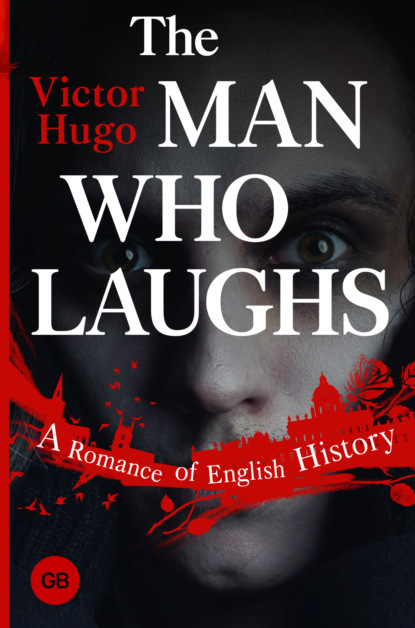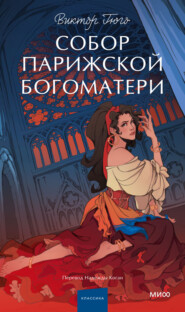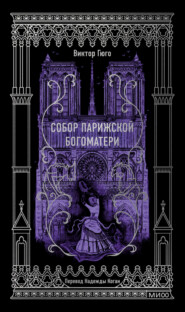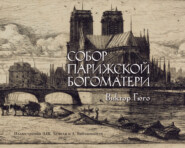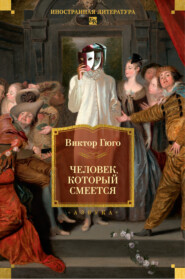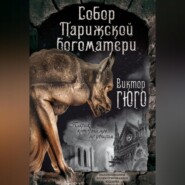По всем вопросам обращайтесь на: info@litportal.ru
(©) 2003-2024.
✖
The Man Who Laughs. A Romance of English History
Настройки чтения
Размер шрифта
Высота строк
Поля
“A peer sent for by the king has the right to kill one or two deer in the royal park.
“A peer holds in his castle a baron’s court of justice.
“It is unworthy of a peer to walk the street in a cloak, followed by two footmen. He should only show himself attended by a great train of gentlemen of his household.
“A peer can be amerced only by his peers, and never to any greater amount than five pounds, excepting in the case of a duke, who can be amerced ten.
“A peer may retain six aliens born, any other Englishman but four.
“A peer can have wine custom-free; an earl eight tuns.
“A peer is alone exempt from presenting himself before the sheriff of the circuit.
“A peer cannot be assessed towards the militia.
“When it pleases a peer he raises a regiment and gives it to the king; thus have done their graces the Dukes of Athol, Hamilton, and Northumberland.
“A peer can hold only of a peer.
“In a civil cause he can demand the adjournment of the case, if there be not at least one knight on the jury.
“A peer nominates his own chaplains. A baron appoints three chaplains; a viscount four; an earl and a marquis five; a duke six.
“A peer cannot be put to the rack, even for high treason. A peer cannot be branded on the hand. A peer is a clerk, though he knows not how to read. In law he knows.
“A duke has a right to a canopy, or cloth of state, in all places where the king is not present; a viscount may have one in his house; a baron has a cover of assay, which may be held under his cup while he drinks. A baroness has the right to have her train borne by a man in the presence of a viscountess.
“Eighty-six tables, with five hundred dishes, are served every day in the royal palace at each meal.
“If a plebeian strike a lord, his hand is cut off.
“A lord is very nearly a king.
“The king is very nearly a god.
“The earth is a lordship.
“The English address God as my lord!”
Opposite this writing was written a second one, in the same fashion, which ran thus:-
“SATISFACTION WHICH MUST SUFFICE THOSE WHO HAVE NOTHING.
“Henry Auverquerque, Earl of Grantham, who sits in the House of Lords between the Earl of Jersey and the Earl of Greenwich, has a hundred thousand a year. To his lordship belongs the palace of Grantham Terrace, built all of marble and famous for what is called the labyrinth of passages-a curiosity which contains the scarlet corridor in marble of Sarancolin, the brown corridor in lumachel of Astracan, the white corridor in marble of Lani, the black corridor in marble of Alabanda, the gray corridor in marble of Staremma, the yellow corridor in marble of Hesse, the green corridor in marble of the Tyrol, the red corridor, half cherry-spotted marble of Bohemia, half lumachel of Cordova, the blue corridor in turquin of Genoa, the violet in granite of Catalonia, the mourning-hued corridor veined black and white in slate of Murviedro, the pink corridor in cipolin of the Alps, the pearl corridor in lumachel of Nonetta, and the corridor of all colours, called the courtiers’ corridor, in motley.
“Richard Lowther, Viscount Lonsdale, owns Lowther in Westmorland, which has a magnificent approach, and a flight of entrance steps which seem to invite the ingress of kings.
“Richard, Earl of Scarborough, Viscount and Baron Lumley of Lumley Castle, Viscount Lumley of Waterford in Ireland, and Lord Lieutenant and Vice-Admiral of the county of Northumberland and of Durham, both city and county, owns the double castleward of old and new Sandbeck, where you admire a superb railing, in the form of a semicircle, surrounding the basin of a matchless fountain. He has, besides, his castle of Lumley.
“Robert Darcy, Earl of Holderness, has his domain of Holderness, with baronial towers, and large gardens laid out in French fashion, where he drives in his coach-and-six, preceded by two outriders, as becomes a peer of England.
“Charles Beauclerc, Duke of St. Albans, Earl of Burford, Baron Hedington, Grand Falconer of England, has an abode at Windsor, regal even by the side of the king’s.
“Charles Bodville Robartes, Baron Robartes of Truro, Viscount Bodmin and Earl of Radnor, owns Wimpole in Cambridgeshire, which is as three palaces in one, having three façades, one bowed and two triangular. The approach is by an avenue of trees four deep.
“The most noble and most puissant Lord Philip, Baron Herbert of Cardiff, Earl of Montgomery and of Pembroke, Ross of Kendall, Parr, Fitzhugh, Marmion, St. Quentin, and Herbert of Shurland, Warden of the Stannaries in the counties of Cornwall and Devon, hereditary visitor of Jesus College, possesses the wonderful gardens at Wilton, where there are two sheaf-like fountains, finer than those of his most Christian Majesty King Louis XIV. at Versailles.
“Charles Somerset, Duke of Somerset, owns Somerset House on the Thames, which is equal to the Villa Pamphili at Rome. On the chimney-piece are seen two porcelain vases of the dynasty of the Yuens, which are worth half a million in French money.
“In Yorkshire, Arthur, Lord Ingram, Viscount Irwin, has Temple Newsain, which is entered under a triumphal arch and which has large wide roofs resembling Moorish terraces.
“Robert, Lord Ferrers of Chartly, Bourchier, and Lonvaine, has Staunton Harold in Leicestershire, of which the park is geometrically planned in the shape of a temple with a façade, and in front of the piece of water is the great church with the square belfry, which belongs to his lordship.
“In the county of Northampton, Charles Spencer, Earl of Sunderland, member of his Majesty’s Privy Council, possesses Althorp, at the entrance of which is a railing with four columns surmounted by groups in marble.
“Laurence Hyde, Earl of Rochester, has, in Surrey, New Park, rendered magnificent by its sculptured pinnacles, its circular lawn belted by trees, and its woodland, at the extremity of which is a little mountain, artistically rounded, and surmounted by a large oak, which can be seen from afar.
“Philip Stanhope, Earl of Chesterfield, possesses Bretby Hall in Derbyshire, with a splendid clock tower, falconries, warrens, and very fine sheets of water, long, square, and oval, one of which is shaped like a mirror, and has two jets, which throw the water to a great height.
“Charles Cornwallis, Baron Cornwallis of Eye, owns Broome Hall, a palace of the fourteenth century.
“The most noble Algernon Capel, Viscount Maiden, Earl of Essex, has Cashiobury in Hertfordshire, a seat which has the shape of a capital H, and which rejoices sportsmen with its abundance of game.
“Charles, Lord Ossulston, owns Darnley in Middlesex, approached by Italian gardens.
“James Cecil, Earl of Salisbury, has, seven leagues from London, Hatfield House, with its four lordly pavilions, its belfry in the centre, and its grand courtyard of black and white slabs, like that of St. Germain. This palace, which has a frontage 272 feet in length, was built in the reign of James I. by the Lord High Treasurer of England, the great-grandfather of the present earl. To be seen there is the bed of one of the Countesses of Salisbury: it is of inestimable value and made entirely of Brazilian wood, which is a panacea against the bites of serpents, and which is called milhombres-that is to say, a thousand men. On this bed is inscribed, Honi soit qui mal y pense.
“Edward Rich, Earl of Warwick and Holland, is owner of Warwick Castle, where whole oaks are burnt in the fireplaces.
“In the parish of Sevenoaks, Charles Sackville, Baron Buckhurst, Baron Cranfield, Earl of Dorset and Middlesex, is owner of Knowle, which is as large as a town and is composed of three palaces standing parallel one behind the other, like ranks of infantry. There are six covered flights of steps on the principal frontage, and a gate under a keep with four towers.
“Thomas Thynne, Baron Thynne of Warminster, and Viscount Weymouth, possesses Longleat, in which there are as many chimneys, cupolas, pinnacles, pepper-boxes pavilions, and turrets as at Chambord, in France, which belongs to the king.
“Henry Howard, Earl of Suffolk, owns, twelve leagues from London, the palace of Audley End in Essex, which in grandeur and dignity scarcely yields the palm to the Escorial of the King of Spain.
“In Bedfordshire, Wrest House and Park, which is a whole district, enclosed by ditches, walls, woodlands, rivers, and hills, belongs to Henry, Marquis of Kent.
“Hampton Court, in Herefordshire, with its strong embattled keep, and its gardens bounded by a piece of water which divides them from the forest, belongs to Thomas, Lord Coningsby.
“Grimsthorp, in Lincolnshire, with its long façade intersected by turrets in pale, its park, its fish-ponds, its pheasantries, its sheepfolds, its lawns, its grounds planted with rows of trees, its groves, its walks, its shrubberies, its flower-beds and borders, formed in square and lozenge-shape, and resembling great carpets; its racecourses, and the majestic sweep for carriages to turn in at the entrance of the house-belongs to Robert, Earl Lindsey, hereditary lord of the forest of Waltham.
“Up Park, in Sussex, a square house, with two symmetrical belfried pavilions on each side of the great courtyard, belongs to the Right Honourable Forde, Baron Grey of Werke, Viscount Glendale and Earl of Tankerville.
“Newnham Paddox, in Warwickshire, which has two quadrangular fish-ponds and a gabled archway with a large window of four panes, belongs to the Earl of Denbigh, who is also Count von Rheinfelden, in Germany.
“Wytham Abbey, in Berkshire, with its French garden in which there are four curiously trimmed arbours, and its great embattled towers, supported by two bastions, belongs to Montague, Earl of Abingdon, who also owns Rycote, of which he is Baron, and the principal door of which bears the device Virtus ariete fortior.
“William Cavendish, Duke of Devonshire, has six dwelling-places, of which Chatsworth (two storied, and of the finest order of Grecian architecture) is one.
“A peer holds in his castle a baron’s court of justice.
“It is unworthy of a peer to walk the street in a cloak, followed by two footmen. He should only show himself attended by a great train of gentlemen of his household.
“A peer can be amerced only by his peers, and never to any greater amount than five pounds, excepting in the case of a duke, who can be amerced ten.
“A peer may retain six aliens born, any other Englishman but four.
“A peer can have wine custom-free; an earl eight tuns.
“A peer is alone exempt from presenting himself before the sheriff of the circuit.
“A peer cannot be assessed towards the militia.
“When it pleases a peer he raises a regiment and gives it to the king; thus have done their graces the Dukes of Athol, Hamilton, and Northumberland.
“A peer can hold only of a peer.
“In a civil cause he can demand the adjournment of the case, if there be not at least one knight on the jury.
“A peer nominates his own chaplains. A baron appoints three chaplains; a viscount four; an earl and a marquis five; a duke six.
“A peer cannot be put to the rack, even for high treason. A peer cannot be branded on the hand. A peer is a clerk, though he knows not how to read. In law he knows.
“A duke has a right to a canopy, or cloth of state, in all places where the king is not present; a viscount may have one in his house; a baron has a cover of assay, which may be held under his cup while he drinks. A baroness has the right to have her train borne by a man in the presence of a viscountess.
“Eighty-six tables, with five hundred dishes, are served every day in the royal palace at each meal.
“If a plebeian strike a lord, his hand is cut off.
“A lord is very nearly a king.
“The king is very nearly a god.
“The earth is a lordship.
“The English address God as my lord!”
Opposite this writing was written a second one, in the same fashion, which ran thus:-
“SATISFACTION WHICH MUST SUFFICE THOSE WHO HAVE NOTHING.
“Henry Auverquerque, Earl of Grantham, who sits in the House of Lords between the Earl of Jersey and the Earl of Greenwich, has a hundred thousand a year. To his lordship belongs the palace of Grantham Terrace, built all of marble and famous for what is called the labyrinth of passages-a curiosity which contains the scarlet corridor in marble of Sarancolin, the brown corridor in lumachel of Astracan, the white corridor in marble of Lani, the black corridor in marble of Alabanda, the gray corridor in marble of Staremma, the yellow corridor in marble of Hesse, the green corridor in marble of the Tyrol, the red corridor, half cherry-spotted marble of Bohemia, half lumachel of Cordova, the blue corridor in turquin of Genoa, the violet in granite of Catalonia, the mourning-hued corridor veined black and white in slate of Murviedro, the pink corridor in cipolin of the Alps, the pearl corridor in lumachel of Nonetta, and the corridor of all colours, called the courtiers’ corridor, in motley.
“Richard Lowther, Viscount Lonsdale, owns Lowther in Westmorland, which has a magnificent approach, and a flight of entrance steps which seem to invite the ingress of kings.
“Richard, Earl of Scarborough, Viscount and Baron Lumley of Lumley Castle, Viscount Lumley of Waterford in Ireland, and Lord Lieutenant and Vice-Admiral of the county of Northumberland and of Durham, both city and county, owns the double castleward of old and new Sandbeck, where you admire a superb railing, in the form of a semicircle, surrounding the basin of a matchless fountain. He has, besides, his castle of Lumley.
“Robert Darcy, Earl of Holderness, has his domain of Holderness, with baronial towers, and large gardens laid out in French fashion, where he drives in his coach-and-six, preceded by two outriders, as becomes a peer of England.
“Charles Beauclerc, Duke of St. Albans, Earl of Burford, Baron Hedington, Grand Falconer of England, has an abode at Windsor, regal even by the side of the king’s.
“Charles Bodville Robartes, Baron Robartes of Truro, Viscount Bodmin and Earl of Radnor, owns Wimpole in Cambridgeshire, which is as three palaces in one, having three façades, one bowed and two triangular. The approach is by an avenue of trees four deep.
“The most noble and most puissant Lord Philip, Baron Herbert of Cardiff, Earl of Montgomery and of Pembroke, Ross of Kendall, Parr, Fitzhugh, Marmion, St. Quentin, and Herbert of Shurland, Warden of the Stannaries in the counties of Cornwall and Devon, hereditary visitor of Jesus College, possesses the wonderful gardens at Wilton, where there are two sheaf-like fountains, finer than those of his most Christian Majesty King Louis XIV. at Versailles.
“Charles Somerset, Duke of Somerset, owns Somerset House on the Thames, which is equal to the Villa Pamphili at Rome. On the chimney-piece are seen two porcelain vases of the dynasty of the Yuens, which are worth half a million in French money.
“In Yorkshire, Arthur, Lord Ingram, Viscount Irwin, has Temple Newsain, which is entered under a triumphal arch and which has large wide roofs resembling Moorish terraces.
“Robert, Lord Ferrers of Chartly, Bourchier, and Lonvaine, has Staunton Harold in Leicestershire, of which the park is geometrically planned in the shape of a temple with a façade, and in front of the piece of water is the great church with the square belfry, which belongs to his lordship.
“In the county of Northampton, Charles Spencer, Earl of Sunderland, member of his Majesty’s Privy Council, possesses Althorp, at the entrance of which is a railing with four columns surmounted by groups in marble.
“Laurence Hyde, Earl of Rochester, has, in Surrey, New Park, rendered magnificent by its sculptured pinnacles, its circular lawn belted by trees, and its woodland, at the extremity of which is a little mountain, artistically rounded, and surmounted by a large oak, which can be seen from afar.
“Philip Stanhope, Earl of Chesterfield, possesses Bretby Hall in Derbyshire, with a splendid clock tower, falconries, warrens, and very fine sheets of water, long, square, and oval, one of which is shaped like a mirror, and has two jets, which throw the water to a great height.
“Charles Cornwallis, Baron Cornwallis of Eye, owns Broome Hall, a palace of the fourteenth century.
“The most noble Algernon Capel, Viscount Maiden, Earl of Essex, has Cashiobury in Hertfordshire, a seat which has the shape of a capital H, and which rejoices sportsmen with its abundance of game.
“Charles, Lord Ossulston, owns Darnley in Middlesex, approached by Italian gardens.
“James Cecil, Earl of Salisbury, has, seven leagues from London, Hatfield House, with its four lordly pavilions, its belfry in the centre, and its grand courtyard of black and white slabs, like that of St. Germain. This palace, which has a frontage 272 feet in length, was built in the reign of James I. by the Lord High Treasurer of England, the great-grandfather of the present earl. To be seen there is the bed of one of the Countesses of Salisbury: it is of inestimable value and made entirely of Brazilian wood, which is a panacea against the bites of serpents, and which is called milhombres-that is to say, a thousand men. On this bed is inscribed, Honi soit qui mal y pense.
“Edward Rich, Earl of Warwick and Holland, is owner of Warwick Castle, where whole oaks are burnt in the fireplaces.
“In the parish of Sevenoaks, Charles Sackville, Baron Buckhurst, Baron Cranfield, Earl of Dorset and Middlesex, is owner of Knowle, which is as large as a town and is composed of three palaces standing parallel one behind the other, like ranks of infantry. There are six covered flights of steps on the principal frontage, and a gate under a keep with four towers.
“Thomas Thynne, Baron Thynne of Warminster, and Viscount Weymouth, possesses Longleat, in which there are as many chimneys, cupolas, pinnacles, pepper-boxes pavilions, and turrets as at Chambord, in France, which belongs to the king.
“Henry Howard, Earl of Suffolk, owns, twelve leagues from London, the palace of Audley End in Essex, which in grandeur and dignity scarcely yields the palm to the Escorial of the King of Spain.
“In Bedfordshire, Wrest House and Park, which is a whole district, enclosed by ditches, walls, woodlands, rivers, and hills, belongs to Henry, Marquis of Kent.
“Hampton Court, in Herefordshire, with its strong embattled keep, and its gardens bounded by a piece of water which divides them from the forest, belongs to Thomas, Lord Coningsby.
“Grimsthorp, in Lincolnshire, with its long façade intersected by turrets in pale, its park, its fish-ponds, its pheasantries, its sheepfolds, its lawns, its grounds planted with rows of trees, its groves, its walks, its shrubberies, its flower-beds and borders, formed in square and lozenge-shape, and resembling great carpets; its racecourses, and the majestic sweep for carriages to turn in at the entrance of the house-belongs to Robert, Earl Lindsey, hereditary lord of the forest of Waltham.
“Up Park, in Sussex, a square house, with two symmetrical belfried pavilions on each side of the great courtyard, belongs to the Right Honourable Forde, Baron Grey of Werke, Viscount Glendale and Earl of Tankerville.
“Newnham Paddox, in Warwickshire, which has two quadrangular fish-ponds and a gabled archway with a large window of four panes, belongs to the Earl of Denbigh, who is also Count von Rheinfelden, in Germany.
“Wytham Abbey, in Berkshire, with its French garden in which there are four curiously trimmed arbours, and its great embattled towers, supported by two bastions, belongs to Montague, Earl of Abingdon, who also owns Rycote, of which he is Baron, and the principal door of which bears the device Virtus ariete fortior.
“William Cavendish, Duke of Devonshire, has six dwelling-places, of which Chatsworth (two storied, and of the finest order of Grecian architecture) is one.





